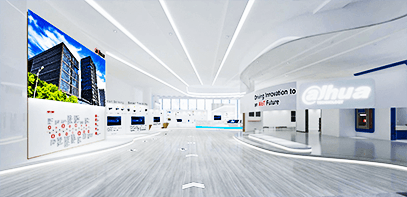What is Dahua IPC Quick-to-Install Eyeball ?
The structure of certain products requires more manpower to install, and the inflexible structural design may consume more installation time. Additionally, cameras used in special scenarios cannot be adjusted in three axes and are not adaptable for various mounting planes. To address these issues, the Dahua IPC offers quick-to-install structure for the eyeball camera. This flexible structural design makes it easier and more convenient for installers to install the camera, saving labor cost and installation time. Furthermore, the dual-lens splicing eyeball camera features a three-axis adjustable structure that enables it to adapt to even the most complex installation scenarios.


IP Quick-to-Install TM Eyeball Installation
Step 1
The camera has a quick mounting base panel, which can be fixed on the ceiling or wall by screws.
Step 2
The monolithic eyeball construction allows for one-step mounting to the base panel.
Step 3
With clever structural design, the eyeball camera can be locked in place by just tightening the screw, making it stable and secure.
Completion
After installation, the mounting base panel is hidden from view for better aesthetic.
IP Quick-to-Install TM Eyeball Structure
Its fastener design does not require screws, providing easy installation. Its clip design prevents the camera from falling off the structure during installation. The structure also uses a tightening screw to fasten the camera enclosure, camera body and base structure together, which helps stabilize the camera and prevent unnecessary movements. Also, the entire camera can be locked to the quick-mount panel base, preventing it from being stolen.


IP Adjustable Three-axis Structure
The body of the camera has a spherical design, which can be flexibly adjusted through Tilt and Rotation. The circular design of the enclosure structure can be adjusted through unlimited pan direction. Overall, the camera is adjustable in three axes and supports a wide range of complex and uneven mounting planes.
Recommended Products
Typical Scenarios

Café
In indoor scenarios like cafés, quick-to-install TM eyeball cameras can help save installation time, thus shortening the total lead time and reducing the overall cost of opening the shop.

Parkland
The IPC dual-lens splicing eyeball camera is suitable for large-scale scene monitoring, providing excellent image quality. The camera's three-axis direction can be adjusted and installed in a variety of uneven installation environments (e.g. stairs).




















